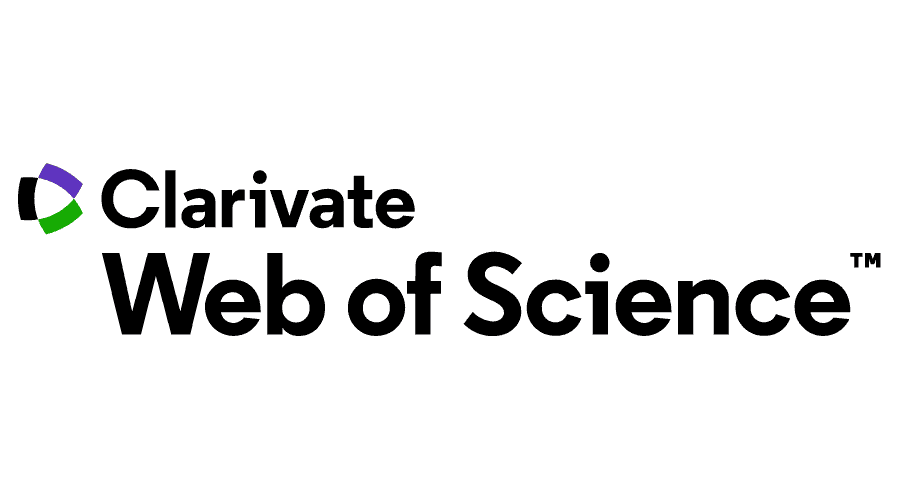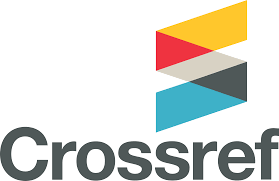Abstract
Research Aims: The study evaluates the mediating role of trainees’ willingness to learn in the relationship between military training content and trainees’ willingness to execute defence and security jobs.
Design/Methodology/Approach: A survey method was conducted using a cross-sectional research design to gather 343 self-report questionnaires from Malaysian army personnel. A purposive sampling technique was utilised while the SmartPLS was employed to assess the measurement model and test the structural equation model.
Research Findings: The findings of a structural equation modelling test confirmed that the trainees’ willingness to learn is an important mediating variable between military training content and trainees’ willingness to execute defence and security jobs.
Theoretical Contribution/Originality: This study reveals that the relationship between military training content and trainees’ willingness to execute defence and security jobs is mediated by the trainees’ willingness to learn. This finding has supported and broadened past studies in Southeast Asia and other countries.
Managerial Implication in the South East Asian Context: The findings assist the human resources department in understanding the diverse perspectives regarding the willingness to learn and formulate employee development programs to maintain and enhance the performance of military organisations amid the evolving global defence and security landscape.
Research Limitation & Implications: The data were collected from military organisations in a developing country. Thus, this investigation may have an impact on how broadly the results may be applied. Future studies should consider more varied samples.
References
Alkaf, A. R., Yunus, E., & Ady, S. U. (2024). Employee performance model: Analysis of training, organizational culture and work environment by mediating work discipline. SEISENSE Journal of Management, 7(1), 35-50. https://doi.org/10.33215/ng8fxg53
Andoh, R. P. K., Annan-Prah, E. C., Boampong, G. N., Jehu-Appiah, J., Korsah, A. M., & Owusu, E. A. (2024). Examination of the influence of transfer opportunity, assimilation of training content and motivation to transfer in the training transfer process. European Journal of Training and Development, 48(3/4), 281-297. https://doi.org/10.1108/EJTD-09-2022-0100.
Apte, A. (2020). Understanding readiness metrics for the humanitarian operations through literature review. Journal of Humanitarian Logistics and Supply Chain Management, 10(3), 321–345. https://doi.org/10.1108/JHLSCM-08-2018-0059.
Arbani, M. (2024). The importance of defence intelligence agencies in non-combat military missions: Instruments of special attention for defence capacity building and capabilities. Advances In Social Humanities Research, 2(4), 624-638. https://doi.org/10.46799/adv.v2i4.218
Arcuri‐Sanders, N. M., & Forziat‐Pytel, K. (2024). Effectively counseling the military population: Training needs for counselors. Journal of Multicultural Counseling and Development, 52(1), 2-13. https://doi.org/10.1002/jmcd.12236.
Ateş, B. (2024). Civil–military relations and education of military elites in Türkiye: Lessons learned from the past. Armed Forces & Society, 50(1), 253-273. https://doi.org/10.1177/0095327X22110329
Baird, E. W., Lammers, D. T., Betzold, R. D., Brown, S. R., Tadlock, M. D., Eckert, M. J. & Jansen, J. O. (2024). Developing the ready military medical force: Military-specific training in Graduate Medical Education. Trauma Surgery & Acute Care Open, 9(1), e001302. https://doi.org/10.1136/tsaco-2023-001302.
Barry, E. S., Durning, S. J., Schreiber-Gregory, D., Grunberg, N. E., Yarnell, A. M., & Dong, T. (2023). Undergraduate medical education leader performance predicts postgraduate military leader performance. Military Medicine, 188(Supplement_2), 87-93. https://doi.org/10.1093/milmed/usac110
Brislin, R. W. (1970). Back-translation for cross-cultural research. Journal of cross-cultural psychology, 1(3), 185-216. https://doi.org/10.1177/135910457000100301.
Brouillard, A.D.E. (2024). The Perceptions of Army Instructional Systems Specialists Regarding a Formalized Training Program: A Phenomenological Study [Doctoral Dissertations Liberty University]. Liberty University Scholars Crossing. https://digitalcommons.liberty.edu/cgi/viewcontent.cgi?article=6752&context=doctoral.
Bularca, M. C., Bumbuc, S., Barsan, G., Coman, C., Bucoi, A., Hertanu, A., Netedu, A., & Aron, I. (2024). The influence of COVID-19 on the learning and developing processes of practical skills in military educational institutions. Frontiers in Education, 9, 1332850. https://doi.org/10.3389/feduc.2024.1332850.
Cabrera, O. A., Trachik, B. J., Ganulin, M. L., Dretsch, M. N., & Adler, A. B. (2024). Longitudinal measurement invariance and growth curve modeling of psychological resilience across the deployment cycle. Military Psychology, 36(4), 393-402. https://doi.org/10.1080/08995605.2023.2188846.
Cohen, J. (2013). Statistical power analysis for the behavioral sciences. Abingdon-on-Thames: Routledge.
Dandeker, C., & Ydén, K. (2024). Military professionalism, power, and the division of labor: The case of the reintroduction of NCOs in the Swedish Armed Forces. Armed Forces & Society, 50(1), 294-314. https://doi.org/10.1177/0095327X221108761.
Deci, E. L., & Ryan, R. M. (1985). Intrinsic motivation and self-determination in human behavior. New York: Plenum.
Duzhyi, R. V., & Derkach, T. M. (2024). Learning styles of the Armed Forces of Ukraine personnel undergoing English language courses. Educational Technology Quarterly, 2024(1), 97-119. https://doi.org/10.55056/etq.659.
Dweck, C. S., & Leggett, E. L. (1988). A social-cognitive approach to motivation and personality. Psychological Review, 95(2), 256–273. https://doi.org/10.1037/0033-295X.95.2.256.
Eccles, J. S., & Wigfield, A. (2002). Motivational beliefs, values, and goals. Annual Review of Psychology, 53(1), 109-132. https://doi.org/10.1146/annurev.psych.53.100901.135153.
Elkington, R., Ruttenberg-Rozen, R. & Worthington, N. (2024). The use of META (virtual simulations) in Canadian junior military leadership development. Journal of Leadership Education, ahead-of-print. https://doi.org/10.1108/JOLE-02-2024-0037
Fabian, S. & Boutton, A. (2024). Foreign military training and socialization: An examination of human capital and norm transmission between allies. International Studies Quarterly, 68(2), sqae040. https://doi.org/10.1093/isq/sqae040.
Fausett, C. M., Korentsides, J. M., Knott, C. C., Chik, K., Grome, A., Sciarini, L. W., & Keebler, J. R. (2024). Redesign of military patient handoff training for emergency medical services. Ergonomics in Design, 0(0). https://doi.org/10.1177/10648046241237086
Garcia Estrada, E., J., Prasolova-Førland, E., Kjeksrud, S., Themelis, C., Lindqvist, P., Kvam, K., Midthun, O., Sverre, K., Hokstad, L. M., Mohamed, S. K., Grassini, S., & Ricci, S. (2024). Military education in extended reality (XR): learning troublesome knowledge through immersive experiential application. The Visual Computer, 40(10), 7249-7278. https://doi.org/10.1007/s00371-024-03339-w.
Goulart, F. R. (2024). Legitimacy of using force as a fundamental ingredient for military motivation in robust peacekeeping operations. International Peacekeeping, 31(1), 114-146. https://doi.org/10.1080/13533312.2023.2276688.
Hair Jr, J. F., Hult, G. T. M., Ringle, C. M., & Sarstedt, M. (2017). A primer on Partial Least Squares Structural Equation Modeling (PLS-SEM) (2nd ed). Thousand Oaks: SAGE Publications.
Henderson, L. R. (2024). Developing attributes of the leader: From military service to the civilian workforce. Advances in Developing Human Resources, 26(1), 5-19. https://doi.org/10.1177/1523422323121244.
Ithnin, N.S., Ismail, M.D., Ismail, A. & Tharina, A.F. (2022). Drivers and outcome of motivation to improve work through learning: Evident from South East Asia. The South East Asian Journal of Management, 16(1), 118-138. https://doi.org/10.21002/seam.v16i1.1086.
Junça Silva, A., & Pinto, D. (2024). Training under an extreme context: the role of organizational support and adaptability on the motivation transfer and performance after training. Personnel Review, 53(3), 743-770. https://doi.org/10.1108/pr-09-2022-0629.
Karami, E., Arabzadeh, E., & Shirvani, H. (2024). The effect of four-weeks of CrossFit workouts on cardiovascular indicators and physical readiness in military forces. Comparative Exercise Physiology, 20(2), 183-191. https://doi.org/10.1163/17552559-20230016.
Kierkegaard, M., Tegern, M., Halvarsson, A., Broman, L., & Larsson, H. (2024). High Physical Exposure During Female Recruits’ Basic Military Training in Sweden-A Descriptive Study. Military medicine, 189(3-4), e674-e682. https://doi.org/10.1093/milmed/usad335.
Kline, R. B. (2016). Principles and practice of structural equation modeling (4th ed.). New York: Guilford Press.
Kock, N. (2015). Common method bias in PLS-SEM: A full collinearity assessment approach. International Journal of e-Collaboration, 11(4), 1-10. https://doi.org/10.4018/ijec.2015100101.
Kozyar, M. M., Nanivska, L. L., Romanyshyna, O. Y., Romanyshyn, A. M., & Yakimets, Y. M. (2020). Communicative competence formation of future officers in the process of foreign language training. International Journal of Higher Education, 9(7), 153-165. https://doi.org/10.5430/ijhe.v9n7p153.
Kwon, H., Lee, S. (2024). Novel rifle number recognition based on improved YOLO in military environment. Computers, Materials & Continua, 78(1), 249-263. https://doi.org/10.32604/cmc.2023.042466.
Lawler, E. and Porter, L. (1967) The Effects of Performance on Job Satisfaction. Industrial Relations, 7, 20-28. http://dx.doi.org/10.1111/j.1468-232X.1967.tb01060.x.
Mamchii, O. (2024, September 26). Which are the top 10 strongest armies in the world in 2024? Best Diplomats. Retrieved October, 23 2024, from https://bestdiplomats.org/strongest-armies-in-the-world/.
Manning, G., & Curtis, K. (2022). The art of leadership (7th ed.). New York: McGraw Hill Publishers.
Meher, J. R., Nayak, L., Mishra, R. K., & Patel, G. (2022). Impact of organizational learning culture on organizational effectiveness: a serial mediation analysis with knowledge sharing and employee competencies. VINE Journal of Information and Knowledge Management Systems, 54(2), 324-338. https://doi.org/10.1108/vjikms-10-2021-0230.
Memon, M.I., Ting, H., Cheah, J.H., Thurasamy, R. Chuah, F. & Cham, T.H. 2020. Sample size for survey research: review and recommendations. Journal of Applied Structural Equation Modeling: 4(2), i-xx. https://doi.org/10.47263/jasem.4(2)01.
Mohamad, N. I., Ismail, A., Abd Rahman, I., Zihni Tunca, M., Pusparini, E. S., & Rino, R. (2023). Antecedents and outcome of trainees’ motivation: Evident from South East Asia. The South East Asian Journal of Management, 17(1), 49-74. https://doi.org/10.21002/seam.v17i1.1305.
MP 1.1.9A TD. (2005). Manual TD: Batalion Infantri Standard. Kuala Lumpur: Markas Pemerintahan Latihan & Doktrin Tentera Darat.
Nanivska, L. L., Pasichnyk, S. M., Serhiienko, T. M., Shcherba, O. V., & Yakimets, Y. M. (2022). The value of future officers’ foreign language training for participating in international peacekeeping operations. International Journal of Education and Information Technologies, 16, 1–11. https://doi.org/10.46300/9109.2022.16.1.
Neuman, T.J., Johnson, W.R., Joseph, M. M., Andrews, M., Patrick, G., Wilson, R.L., & Joshua D H. (2024). Updating the military unique curriculum for a ready medical force. Military Medicine, 189(5-6), 1181–1189. https://doi.org/10.1093/milmed/usad099.
Nkambule, A. H. (2024). Exploring how individual adaptability and hardiness predict work engagement among recruits in the Military Skills Development System (MSDS). [Unpublished Master’s Thesis Stellenbosch University]. Stellenbosch University SUNScholar. https://scholar.sun.ac.za/server/api/core/bitstreams/e51b20e2-a6cd-45d3-8fa3-a4216fbc9505/content.
Nurmala, M., Huda, M., & Faqih, A. (2024). The fostering religious devotion in Arabic Military students through language proficiency development. Al-Fusha: Arabic Language Education Journal, 6(1), 10–20. https://doi.org/10.62097/alfusha.v6i1.1119.
Otkydach, V., Bohdanov, M., & Bondarovitch, O. (2024). The influence of military-sports all-around training on the health of cadets of the security and defense sector. Scientific Journal of National Pedagogical Dragomanov University Series 15 Scientific and Pedagogical Problems of Physical Culture (Physical Culture and Sports), 2(174), 12–16. https://doi.org/10.31392/udu-nc.series15.2024.2(174).02.
Peng, D. X., & Lai, F. (2012), Using partial least squares in operations management research: A practical guideline and summary of past research. Journal of Operations Management, 30(6), 467-480. https://doi.org/10.1016/j.jom.2012.06.002.
Peterson, A. L., Moore, B. A., Evans, W. R., Young-McCaughan, S., Blankenship, A. E., Straud, C. L., McLean, C. S., Miller, T. L., & Meyer, E. C. (2024). Enhancing resiliency and optimizing readiness in military personnel through psychological flexibility training: Design and methodology of a randomized controlled trial. Frontiers in Psychiatry, 14, 1299532. https://doi.org/10.3389/fpsyt.2023.1299532.
Pînzariu, S. G., Neag, M. M., & Pînzariu, A. I. (2024). Enhancing joint training and education in nato: a comprehensive framework for interoperability and operational effectiveness. Scientific Bulletin-Nicolae Balcescu Land Forces Academy, 29(1), 111-117. https://doi.org/10.2478/bsaft-2024-0012.
Rolluqui, C. J. V., Karon, S. N. O. A., Villahermosa, M. D. B., & Friales, W. C. (2023). Withstanding the challenges on infantry operational courses: the case of military women in the Division Training School in Cotabato City. East Asian Journal of Multidisciplinary Research, 2(4), 1689–1708. https://doi.org/10.55927/eajmr.v2i4.3653.
Rowell, P. (2024). Education and training in the British military. Education Journal Review, 30(2). 1462-7272.
Ryan, R. M., & Deci, E. L. (2024). Self-determination theory. In Encyclopedia of quality of life and well-being research (pp. 6229-6235). Cham: Springer International Publishing.
Saiz-Pardo, M., Domínguez, M. C. H., & Molina, L. M. (2021). Transactive memory systems mediation role in the relationship between motivation and internal knowledge transfers in a military environment. Journal of Knowledge Management, 25(10), 2396–2419. https://doi.org/10.1108/jkm-10-2020-0777.
Saul, K. M., Young, M. D., Siddiqi, J. M., & Hirsch, D. A. (2024). Developing a mental toughness program for basic military training. Military Psychology, 36(2), 203–213. https://doi.org/10.1080/08995605.2023.2167467.
Schmitt, M. N., & Pakkam, A. S. (2024). Cyberspace and the Jus ad Bellum: The state of play. International Law Studies, 103(1), 194-227. https://digital-commons.usnwc.edu/cgi/viewcontent.cgi?article=3085&context=ils.
Sekaran, U., & Bougie, R. (2020) Research methods for business: A skill-building approach (8th ed.). West Sussex: John Wiley & Sons, .
Shani, M. H., & Zahari, A. S. M. (2024). Motivation factors and work performance at Malaysian Army Training Centre’s. International Journal of Academic Research in Business & Social Sciences, 14(4), 1116-1127. http://dx.doi.org/10.6007/IJARBSS/v14-i4/21242.
Sharma, M. R., & Jain, D. (2024). Transitioning from military to civilian society: Trials and tribulations of integration process. Vision, 28(4), 494-503. https://doi.org/10.1177/09722629211040881.
Sottilare, R.A. (2024). Examining the role of knowledge management in adaptive military training systems. In International Conference on Human-Computer Interaction (pp. 300-313). Cham: Springer Nature Switzerland.
Stonkuviene, I. (2024). “We will fight for peace all over the world until the last grenade” Initial Military Training in Schools of the Lithuanian SSR in the Late Soviet Era. Social and Education History, 13(1), 38-57. https://doi.org/10.17583/hse.12131.
Surber, R. S. (2024). Military Training and Revisionist Just War Theory’s Practicability Problem. The Journal of Ethics, 28(1), 1-25. https://doi.org/10.1007/s10892-023-09439-4.
Tait, J. L., Aisbett, B., Corrigan, S. L., Drain, J. R., & Main, L. C. (2024). Recovery of cognitive performance following multi-stressor military training. Human Factors, 66(2), 389-403. https://doi.org/10.1177/00187208221086686.
Terlizzi, B., Abrams, T. C., Sacko, R. S., Hand, A. F., Silvey, K., & Stodden, D. F. (2023). The relationship between functional motor competence and performance on the army combat fitness test in army reserve officer training corps cadets. Military medicine, 188(7-8), e1910-e1917. https://doi.org/10.1093/milmed/usab537.
Vroom, V. (1964) Work and motivation. New York: Wiley and Sons.
Wong, L. G., & Gerras, S. J. (2020). The impact of military culture on the performance of service members. Military Psychology, 32(2), 133-143.
Zainol, N. A. M., Ismail, A., & Liaw, J. O. H. (2021). Motivasi latihan sebagai peramal kepada pemindahan latihan dalam program pembangunan kepimpinan Kor Infantri Tentera Darat Malaysia. Manajemen Pertahanan: Jurnal Pemikiran dan Penelitian Manajemen Pertahanan, 7(1), i-xx.
Zainol, N. A. M., Mohamed, H. A. B., & Yasin, R. (2024). Leadership development program: the correlation between training design and training transfer based on the Islamic perspective. International Journal of Management Studies, 31(1), 113-136.. https://doi.org/10.32890/ijms2024.31.1.5.
Zhang, S., Li, K., & Yang, Y. (2024). Research on the blended learning approach of military academy courses based on SPOC. In Proceedings of the 3rd International Conference on Education, Language and Art (ICELA 2023) (Vol. 831, p. 28). London: Springer Nature. https://doi.org/10.2991/978-2-38476-214-9_5.
Recommended Citation
Ismail, Azman; Mat Deli, Mazzlida; Mohd Zainol, Noor Azmi; Nik Abdullah, Nik Anis Sazwani; and Abdul Ghani Azmi, Ilhaamie
(2025)
"The Relationship between Military Training Content, Willingness to Learn and Execute Defence and Security Jobs,"
The South East Asian Journal of Management: Vol. 19:
No.
1, Article 2.
DOI: 10.7454/seam.v19i1.1779
Available at:
https://scholarhub.ui.ac.id/seam/vol19/iss1/2












